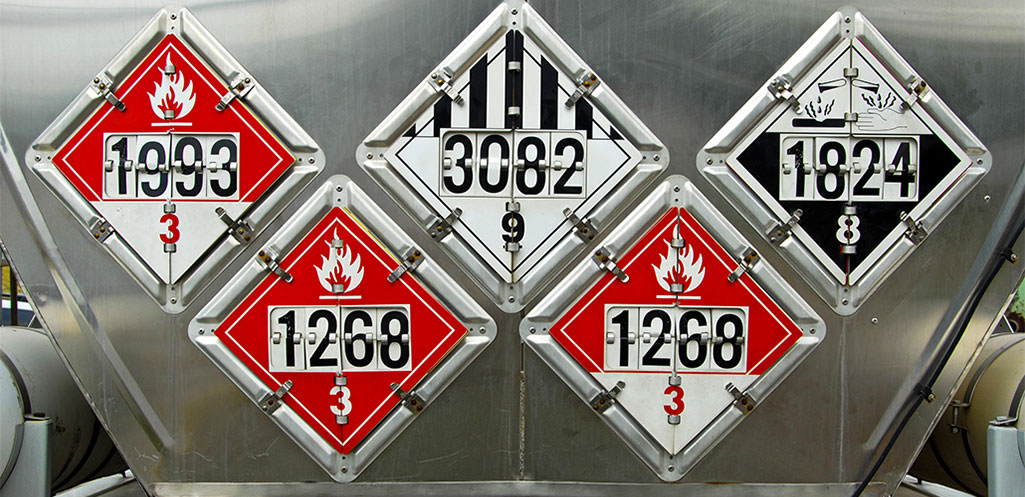
SPONSORED
Five New Hazmat Rules to Look for in 2018
- By Roger Marks
- Jan 29, 2018
Ask a dangerous goods (DG) professional to name the most challenging part of his or her job, and you're likely to hear about dense regulatory standards that overlap and seem to change on a near daily basis.
As dangerous goods shippers, freight forwarders, and carriers roll into 2018, new rules for hazmat air and vessel shipments are already in effect. In addition, U.S. DOT's Pipeline and Hazardous Materials Safety Administration (PHMSA) plans to start finalizing new hazmat rules as soon as February 2018.
Here, we'll review the new DG air and vessel requirements that are mandatory now and review five new or changing DOT hazmat rules most likely to hit the books as Final Rules this year.
New IATA DGR Rules for Air Shippers
For hazmat air shippers, the 59th Edition of the International Air Transport Association's Dangerous Goods Regulations, or IATA DGR, is in effect as of January 1, 2018. The 59th Edition of the IATA DGR includes stricter requirements for lithium batteries shipped by air, a re-ordered list of Class 9 materials in Subsection 3.9.1, and a new Appendix I that details changes planned for air shippers in 2019.
Just before January 1, IATA published the first Addendum to the 2018 DGR, which includes additional updates for air shippers and airline passengers. IATA uses these addendums to make ongoing revisions to the current DGR before the publication of the next edition.
2016 IMDG Code Mandatory as of January 1
Compliance with the latest International Maritime Dangerous Goods Code, or IMDG Code, is also mandatory as of January 1. Updates made in the 2016 edition, compliance with which was voluntary throughout last year, are now officially in force. These include new dangerous goods marking and labeling criteria; new packing instructions for certain shipments of engines, lithium batteries, and aerosols; and adjustments to the IMDG Code Dangerous Goods List.
Five New DOT Hazmat Rules Expected in 2018
DOT, along with other federal agencies, recently released a semiannual agenda of rulemaking activities, many of which will impact hazardous materials professionals in 2018. The five rulemakings below, in progress now, are all scheduled to be published as final rules before Fall 2018.
1. Enhanced Safety Provisions for Lithium Batteries by Air (RIN 2137-AF20)
Expected in February 2018, this Interim Final Rule will harmonize the 49 CFR hazmat regulations with evolving international standards for shipping lithium batteries by air. International requirements already in effect under the latest IATA DGR will now be adopted into 49 CFR and include:
- Prohibiting lithium-ion cells and batteries as cargo on passenger aircraft;
- Limiting state-of-charge to 30%; and
- Limiting the use of alternate provisions for small cells or batteries by air.
Lithium battery requirements are one area of the hazmat regulations that have changed rapidly in the past decade, and will continue to evolve as regulators and industry learn more about the potential and hazards of these batteries.
2. Response to Industry Petitions—RIN 2137-AF09
Under regulations found at 49 CFR 106.95, interested parties may petition US DOT to amend, remove, or add hazmat regulations to enhance safety, streamline the CFR text, or boost efficiency for shippers and carriers. In 2018, PHMSA plans to address 19 such petitions from hazmat stakeholders to provide clarification and/or relief within the hazmat shipping regulations.
Petitions to be addressed include an increase to the service life of certain hazmat tank cars and removing the emergency response number requirement for shipments of excepted quantities of hazardous materials.
This final rule is also expected in February 2018.
3. Miscellaneous Amendments Pertaining to DOT Specification Cylinders (RIN 2137-AE80)
DOT will address various petitions from industry stakeholders pertaining to the manufacture, maintenance, and use of DOT specification cylinders. The rulemaking will also incorporate two existing hazmat special permits into the 49 CFR Hazardous Materials Regulations (HMR).
DOT expects to issue this final rule in April 2018.
4. EPA's Electronic Hazardous Waste Manifest System
Technically speaking, this one is a U.S. EPA rulemaking—but it does have consequences for hazmat shippers. The Hazardous Waste Manifest is a shipping paper required for the transport of hazardous waste, and hazardous waste is regulated in transport as a hazardous material by US DOT.
On January 3, 2018, EPA published a final rule to guide the process of setting and collecting fees from users of the electronic Manifest system. Rollout of the long-planned e-Manifest system will begin in earnest on June 30 of this year, when EPA plans to implement the system for collecting domestic hazardous waste manifests and domestic shipments of State-only regulated hazardous wastes.
As for how it will work, EPA has determined that charging user fees to treatment, storage, and disposal facilities (TSDFs) and State-only waste receiving facilities is "the most effective and efficient means" of collecting user fees to fund the administration of the e-Manifest system.
5. Oil Spill Response Plans for High-Hazard Flammable Trains (RIN 2137-AF08)
This year, DOT will promulgate a Final Rule to expand the applicability of oil spill response plans for trains transporting Class 3 flammable liquids in certain volumes and orientations across the train.
The bolstered requirements will apply to High-Hazard Flammable Trains, or HHFTs. A "High-Hazard Flammable Train" is a train carrying 20 cars of a Class 3 flammable liquid in a continuous block or 36 or more such cars across the entire train. Crude oil production and transport volumes have risen significantly in the past decade: In 2009, 10,800 rail car loads of crude oil traveled by Class I railroad. By 2015, that number had skyrocketed to over 400,000.1
DOT plans to issue this final rule in July 2018.
These likely won't be the only changes for hazmat shippers in 2018. But, by identifying the future regulations or updates that may impact operations, shippers, brokers, and carriers can avoid confusion and panic when DOT finalizes the new rules.
Footnotes